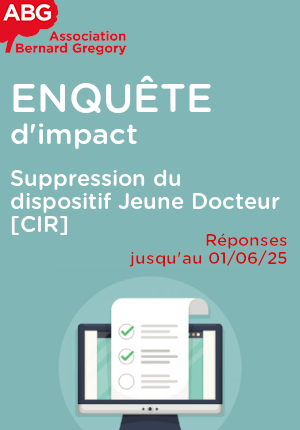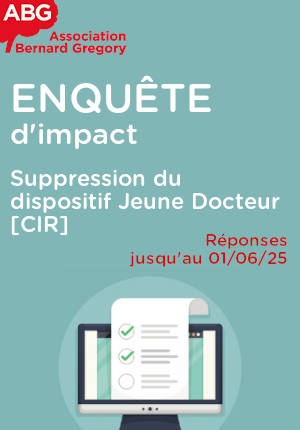Évolution des paysages guyanais et paléo-environnements au Pléistocène supérieur : caractérisation multi-méthodes des archives littorales et alluviales // Upper-Pleistocene landscape evolution and paleo-environments in French Guyana : multi-method investi
|
ABG-131593
ADUM-65666 |
Sujet de Thèse | |
| 30/04/2025 | Autre financement public |
Université Grenoble Alpes
Grenoble CEDEX 9 - Auvergne-Rhône-Alpes - France
Évolution des paysages guyanais et paléo-environnements au Pléistocène supérieur : caractérisation multi-méthodes des archives littorales et alluviales // Upper-Pleistocene landscape evolution and paleo-environments in French Guyana : multi-method investi
- Terre, univers, espace
géomorphologie, paléoenvironnements littoraux, archives alluviales, géochronologie de surface, cartographie SIG, provenance sédimentaire & ADN environnemental
geomorphology, coastal paleoenvironments, alluvial archives, earth surface geochronology, GIS mapping, sediment provenance & environmental DNA
geomorphology, coastal paleoenvironments, alluvial archives, earth surface geochronology, GIS mapping, sediment provenance & environmental DNA
Description du sujet
Le plateau des Guyanes, situé dans la partie nord de l'Amazonie près de l'équateur, constitue un vaste territoire d'environ 2.5 millions de km2, abritant aujourd'hui une remarquable diversité taxonomique au sein de ses écosystèmes terrestres et aquatiques. Cependant, les connaissances sur la biodiversité passée de cette région, notamment en Guyane française, restent très fragmentaires, y compris pour des périodes relativement récentes comme le Pléistocène supérieur et l'Holocène. Cette lacune s'étend également à la reconstitution des paléo-environnements et à la dynamique géomorphologique, dont les mécanismes et la chronologie demeurent largement spéculatifs. Or, ces informations sont essentielles pour retracer l'évolution de la paléo-biodiversité, ainsi que les modalités de dispersion et d'installation des populations humaines au cours du Pléistocène-Holocène sur le plateau des Guyanes, en relation avec les paléo-paysages et les conditions environnementales existantes.
L'objectif de ce projet doctoral est d'apporter des contraintes quantitatives pour reconstruire les paléo-paysages et la dynamique d'érosion / sédimentation en Guyane française. Le projet s'appuiera sur l'étude des zones littorales et des grands fleuves dont l'évolution sera interprétée en termes de forçages géodynamiques et climatiques. Les résultats obtenus permettront de proposer un cadre conceptuel et chronologique qui établissent les conditions paléo-environnementales au cours du Pléistocène supérieur et de l'Holocène. Cette approche géomorphologique sera mise en perspective avec les enregistrements disponibles concernant la paléo-biodiversité et les occupations humaines, offrant ainsi une vision intégrée de l'évolution de la région.
------------------------------------------------------------------------------------------------------------------------------------------------------------------------
------------------------------------------------------------------------------------------------------------------------------------------------------------------------
The Guiana Plateau, located in the northern part of Amazonia near the equator, is a vast territory covering some 2.5 million km2, and is today hosting a vast taxonomic diversity in both terrestrial and aquatic ecosystems. However, little is known about the past biodiversity of this region, particularly in French Guiana, even for relatively recent periods such as the Upper Pleistocene and Holocene. This lack of knowledge also concerns the reconstruction of paleo-environments in French Guiana, and of the geomorphological dynamics, which are still poorly understood and whose timing is highly speculative. Yet this information is needed to trace the chronology and modalities of changes in palo-biodiversity, as well as in human dispersal and settlement during the Pleistocene-Holocene in the Guianas, in relation to existing palaeo-landscapes and palaeo-environmental conditions.
The aim of this PhD project is to provide quantitative constraints for reconstructing paleo-landscapes and erosion/sediment dynamics in French Guiana. The project will be based on the study of coastal zones and major rivers, whose evolution will be interpreted in terms of geodynamic and climatic forcings. The results obtained will enable us to propose a conceptual and chronological framework that establishes paleoenvironmental conditions during the Upper Pleistocene and Holocene. This geomorphological approach will be put into perspective with the available records concerning paleo-biodiversity and human occupations, thus offering an integrated vision of the Guiana's evolution.
------------------------------------------------------------------------------------------------------------------------------------------------------------------------
------------------------------------------------------------------------------------------------------------------------------------------------------------------------
Début de la thèse : 01/10/2025
WEB : https://anr.fr/Projet-ANR-24-CE02-0004
L'objectif de ce projet doctoral est d'apporter des contraintes quantitatives pour reconstruire les paléo-paysages et la dynamique d'érosion / sédimentation en Guyane française. Le projet s'appuiera sur l'étude des zones littorales et des grands fleuves dont l'évolution sera interprétée en termes de forçages géodynamiques et climatiques. Les résultats obtenus permettront de proposer un cadre conceptuel et chronologique qui établissent les conditions paléo-environnementales au cours du Pléistocène supérieur et de l'Holocène. Cette approche géomorphologique sera mise en perspective avec les enregistrements disponibles concernant la paléo-biodiversité et les occupations humaines, offrant ainsi une vision intégrée de l'évolution de la région.
------------------------------------------------------------------------------------------------------------------------------------------------------------------------
------------------------------------------------------------------------------------------------------------------------------------------------------------------------
The Guiana Plateau, located in the northern part of Amazonia near the equator, is a vast territory covering some 2.5 million km2, and is today hosting a vast taxonomic diversity in both terrestrial and aquatic ecosystems. However, little is known about the past biodiversity of this region, particularly in French Guiana, even for relatively recent periods such as the Upper Pleistocene and Holocene. This lack of knowledge also concerns the reconstruction of paleo-environments in French Guiana, and of the geomorphological dynamics, which are still poorly understood and whose timing is highly speculative. Yet this information is needed to trace the chronology and modalities of changes in palo-biodiversity, as well as in human dispersal and settlement during the Pleistocene-Holocene in the Guianas, in relation to existing palaeo-landscapes and palaeo-environmental conditions.
The aim of this PhD project is to provide quantitative constraints for reconstructing paleo-landscapes and erosion/sediment dynamics in French Guiana. The project will be based on the study of coastal zones and major rivers, whose evolution will be interpreted in terms of geodynamic and climatic forcings. The results obtained will enable us to propose a conceptual and chronological framework that establishes paleoenvironmental conditions during the Upper Pleistocene and Holocene. This geomorphological approach will be put into perspective with the available records concerning paleo-biodiversity and human occupations, thus offering an integrated vision of the Guiana's evolution.
------------------------------------------------------------------------------------------------------------------------------------------------------------------------
------------------------------------------------------------------------------------------------------------------------------------------------------------------------
Début de la thèse : 01/10/2025
WEB : https://anr.fr/Projet-ANR-24-CE02-0004
Nature du financement
Autre financement public
Précisions sur le financement
ANR Financement d'Agences de financement de la recherche
Présentation établissement et labo d'accueil
Université Grenoble Alpes
Etablissement délivrant le doctorat
Université Grenoble Alpes
Ecole doctorale
105 STEP - Sciences de la Terre de l'Environnement et des Planètes
Profil du candidat
Le/la candidat(e) devra posséder des connaissances dans au moins un des domaines suivants des Géosciences: géomorphologie quantitative, géologie du Quaternaire, géochronologie, sédimentologie et/ou géochimie sédimentaire. Des compétences en analyse topographique et cartographie SIG, ainsi qu'un intérêt fort pour les missions d'équipe sur le terrain et le travail en laboratoire, sont nécessaires pour mener à bien le projet et développer les collaborations envisagées. Les candidat(e)s doivent avoir suivi un cursus de Master en Géologie, Géophysique, Géographie physique ou autre discipline quantitative en sciences naturelles, avec un fort intérêt pour la dynamique de la surface terrestre. Le/la candidat(e) devra avoir des compétences avérées en communication orale/écrite en anglais (une maîtrise au moins partielle du français sera un avantage, notamment pour les interactions sociales et la vie à Grenoble, ainsi que lors des missions de terrain en Guyane).
The candidate should have knowledge in at least one of the following fields of Geosciences: quantitative geomorphology, Quaternary geology, geochronology, sedimentology and/or sedimentary geochemistry. Skills in topographic analysis and GIS, as well as a strong interest for collaborative fieldwork and laboratory work are needed to lead this project and establish planned collaborations. The candidate should have a Master degree in Geology, Geophysics, Physical Geography or other quantitative discipline in natural sciences, with a strong interest in the earth surface dynamics. Successful applicant should have strong written and oral communication skills in English (French skills would be advantageous for social interactions and daily life in Grenoble, and for fieldtrips in French Guiana).
The candidate should have knowledge in at least one of the following fields of Geosciences: quantitative geomorphology, Quaternary geology, geochronology, sedimentology and/or sedimentary geochemistry. Skills in topographic analysis and GIS, as well as a strong interest for collaborative fieldwork and laboratory work are needed to lead this project and establish planned collaborations. The candidate should have a Master degree in Geology, Geophysics, Physical Geography or other quantitative discipline in natural sciences, with a strong interest in the earth surface dynamics. Successful applicant should have strong written and oral communication skills in English (French skills would be advantageous for social interactions and daily life in Grenoble, and for fieldtrips in French Guiana).
02/06/2025
Postuler
Fermer
Vous avez déjà un compte ?
Nouvel utilisateur ?
Besoin d'informations sur l'ABG ?
Vous souhaitez recevoir nos infolettres ?
Découvrez nos adhérents
 Groupe AFNOR - Association française de normalisation
Groupe AFNOR - Association française de normalisation  Ifremer
Ifremer  ANRT
ANRT  SUEZ
SUEZ  Tecknowmetrix
Tecknowmetrix  Aérocentre, Pôle d'excellence régional
Aérocentre, Pôle d'excellence régional  ASNR - Autorité de sûreté nucléaire et de radioprotection - Siège
ASNR - Autorité de sûreté nucléaire et de radioprotection - Siège  MabDesign
MabDesign  ADEME
ADEME  Nokia Bell Labs France
Nokia Bell Labs France  ONERA - The French Aerospace Lab
ONERA - The French Aerospace Lab  TotalEnergies
TotalEnergies  Généthon
Généthon  CESI
CESI  Institut Sup'biotech de Paris
Institut Sup'biotech de Paris  PhDOOC
PhDOOC  Laboratoire National de Métrologie et d'Essais - LNE
Laboratoire National de Métrologie et d'Essais - LNE  MabDesign
MabDesign  CASDEN
CASDEN







